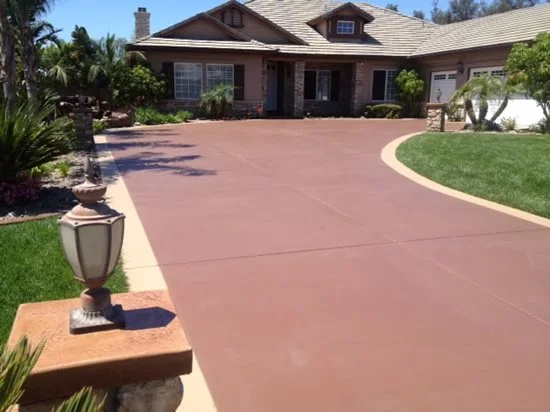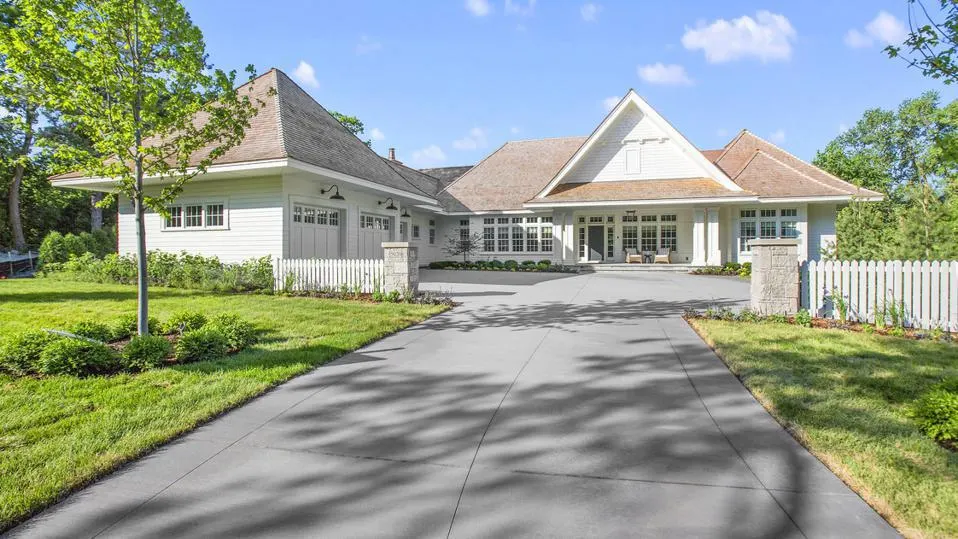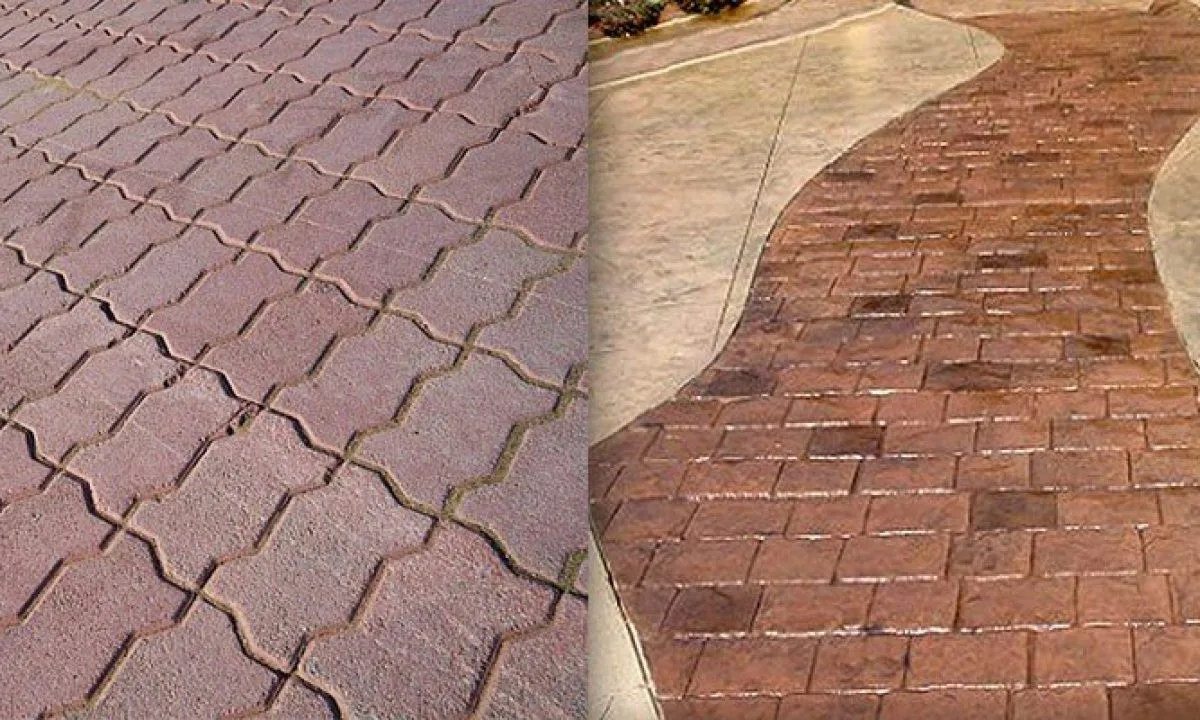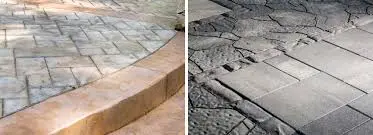Enhancing Property Appeal with Decorative Concrete: A Cost-Effective Solution
Introduction:
Decorative concrete has emerged as a popular choice for enhancing the aesthetic appeal of properties. This versatile material offers various design options, making it suitable for multiple applications such as driveways, patios, and floors. In this article, we'll explore the overview of decorative concrete, the importance of enhancing property appeal, and the cost-effectiveness that makes it an attractive option for homeowners.
Decorative concrete is a specialized form enhanced with various techniques to achieve unique colors, textures, and patterns. Unlike traditional concrete, primarily functional concrete, decorative concrete adds visual interest and character to outdoor and indoor spaces.
Enhancing a property's appeal is essential for creating a welcoming and attractive environment. Whether for personal enjoyment or increasing resale value, a visually appealing property makes a lasting impression on visitors and potential buyers. Decorative concrete allows homeowners to customize their outdoor spaces to reflect their style and personality, transforming ordinary areas into stunning focal points.
One of decorative concrete's most significant benefits is its affordability compared to other materials. While natural stone or pavers may have higher upfront costs, decorative concrete offers similar aesthetics at a fraction of the price. Its longevity and low maintenance needs also save homeowners money over time, making it a sensible investment for increasing a home's curb appeal without going over budget.
By incorporating decorative concrete into your property design, you can achieve stunning results while staying within budget. Because of its adaptability, toughness, and affordability, it's a wise option for homeowners who want to improve the visual attractiveness of their homes without sacrificing money or quality.
Essential Steps in the Planning Phase for Decorative Concrete Projects
Planning Phase:
Before embarking on a decorative concrete project, it's crucial to undergo a thorough planning phase to ensure a successful outcome. This phase involves assessing property needs, setting budgetary constraints, and researching various decorative concrete options to find the best fit for the project.
A. Assessing Property Needs:
Identifying your property's unique requirements is the first step in the planning process. Consider elements like the space that needs to be covered with decorative concrete, its size and layout, the final aesthetic design, and any necessary functionalities. By understanding your property's unique characteristics and personal preferences, you can better tailor the decorative concrete solution to meet your needs.
B. Setting Budgetary Constraints:
Setting a realistic budget, including decorative concrete, is essential for any home improvement project. Determine how much you're willing to invest in the project, considering materials, labor, and any additional expenses such as sealing or maintenance. By establishing budgetary constraints early on, you can narrow your options and avoid overspending during the execution phase.

C. Researching Decorative Concrete Options:
With countless decorative concrete options available, it's essential to research and explore different techniques, finishes, and colors to find the perfect fit for your project.
Consider longevity, upkeep needs, and harmony with your home's architectural design and style. Speaking with a qualified contractor can also yield insightful advice and suggestions tailored to your requirements and financial constraints.
By carefully planning and researching during the initial phase of your decorative concrete project, you can ensure that the result meets your expectations while staying within budget. Assessing property needs, setting budgetary constraints, and exploring decorative concrete options will set the stage for a successful and satisfying home improvement endeavor.
DIY vs. Professional Installation
Regarding decorative concrete projects, homeowners often must choose between DIY (Do It Yourself) and hiring professionals. Each option has its pros and cons, as well as considerations related to cost and quality.
A. Pros and Cons of DIY Projects:
DIY projects offer the appeal of cost savings and the satisfaction of completing a project yourself. However, they also come with certain risks. Pros include the ability to work at your own pace and customize the project to your liking. On the downside, DIY projects require time, effort, and skill, and mistakes can be costly. Additionally, DIYers may need access to specialized tools and expertise, which could result in subpar results.
B. Benefits of Hiring Professionals:
Hiring professionals for decorative concrete installation offers several advantages. Professionals have the necessary skills, experience, and equipment to ensure high-quality results. Drawing on their expertise, they can also provide essential guidance and ideas. In addition, expert installation usually carries assurances or warranties, giving homeowners peace of mind.
C. Cost Considerations for Both Options:
Cost is a significant factor when deciding between DIY and professional installation. DIY projects may seem more affordable upfront, as they eliminate labor costs. However, homeowners should consider the cost of materials, tools, and potential mistakes or rework. However, although professional installation may cost more upfront, it frequently results in better quality and long-term durability, which could save money over time by preventing expensive repairs or replacements.
Ultimately, deciding between DIY and professional installation depends on budget, time, skill level, and desired outcome.
Choosing Decorative Concrete Applications
Decorative concrete offers many options to enhance various areas of your home, from pathways and driveways to floors and countertops. Understanding the different applications can help you select the right choice for your needs and preferences.
A. Stamped Concrete for Pathways and Driveways:
Stamped concrete is popular for pathways and driveways due to its versatility and durability. Stamped concrete offers endless design possibilities and can complement any architectural style, adding curb appeal to your home's exterior.
B. Stained Concrete for Floors and Countertops:
Stained concrete is an excellent option for adding color and character to floors and countertops. Using this method, the surface of cured concrete is stained with acidic or water-based pigments to produce deep, translucent colors that seep into the substance. Stained concrete can be made to compliment your decor or to create a statement piece for any homeroom. It has a distinctive, organic appearance.
C. Overlay Options for Existing Surfaces:
Overlays offer a cost-effective solution for existing concrete surfaces that need a makeover. Overlay options such as micro toppings or spray-down systems can rejuvenate worn or damaged concrete, providing a fresh canvas for decorative finishes. These overlays can be applied thinly over existing surfaces, minimizing disruption and downtime while transforming the appearance of your space.
You can select the decorative concrete application that best fits your functionality, aesthetics, and price requirements by looking into several options. Whether you're enhancing outdoor pathways, indoor floors, or existing surfaces, decorative concrete offers endless possibilities to elevate the beauty and functionality of your home.
Maintenance and Longevity
Ensuring the longevity of your decorative concrete investment requires proper care routines and proactive maintenance.
You can save money on prospective repair expenses and increase the lifespan of your decorative concrete by adhering to these rules.
A. Proper Care Routines:
To keep the surface free of dirt and debris, sweep or rinse it frequently. Clean up spills right once to avoid leaving stains. Regular sealing prevents surface wear, UV ray damage, and moisture intrusion. Furthermore, since they might harm the polish of ornamental concrete, avoid using abrasive cleaners or harsh chemicals.
B. Lifespan of Decorative Concrete:
The lifespan of decorative concrete varies depending on factors such as installation quality, environmental conditions, and maintenance practices. Properly installed and maintained decorative concrete can last for decades, providing enduring beauty and functionality to your space. Regular inspections and minor repairs can help address any issues before they escalate, ensuring the longevity of your investment.
C. Cost-Saving Measures Through Maintenance:
Proactive maintenance extends the lifespan of decorative concrete and helps save money in the long run. By promptly addressing minor issues, you can prevent more extensive, costly repairs down the line. Additionally, regular maintenance can preserve the appearance of decorative concrete, reducing the need for expensive restoration or replacement projects. Investing in routine care and maintenance now can result in significant cost savings over the life of your decorative concrete surfaces.
By implementing proper care routines, understanding the lifespan of decorative concrete, and prioritizing maintenance, you can enjoy the beauty and durability of your investment for years to come. With proactive care, decorative concrete can continue to enhance your space while saving you time and money on repairs and replacements.
Environmental Impact
Decorative concrete isn't just about enhancing aesthetics; it also boasts several eco-friendly features contributing to a greener environment. From sustainable aspects to energy-efficient features and recycling considerations, here's how decorative concrete minimizes its environmental footprint.
A. Sustainable Aspects of Decorative Concrete:
Decorative concrete utilizes locally sourced materials, reducing the carbon footprint associated with transportation. Many decorative concrete products also incorporate recycled materials such as fly ash or slag, diverting waste from landfills and conserving natural resources. Homeowners can support sustainable practices by choosing decorative concrete while enjoying durable and beautiful surfaces.
B. Energy-Efficient Features:
Decorative concrete contributes to energy efficiency by providing thermal mass, which helps regulate indoor temperatures and reduces the need for heating and cooling. Throughout the concrete's lifetime, this may result in less energy being used and fewer greenhouse gas emissions. Additionally, the light-reflective qualities of ornamental concrete can reduce the need for artificial lighting in outdoor areas, which saves even more energy.
C. Recycling and Reusability Considerations:
Decorative concrete has several recycling and reuse applications. In addition to serving as a base material for roads and construction projects, crushed concrete can be used as aggregate in fresh concrete mixes. Alternatively, decorative concrete surfaces can be refinished or repurposed, extending their lifecycle and minimizing waste generation. By prioritizing recycling and reusability, decorative concrete contributes to a circular economy and reduces environmental impact.
Conclusion
In conclusion, decorative concrete offers homeowners a solid return on investment by adding value to the property, comparing favorably with other enhancements, and delivering long-term financial benefits. With its aesthetic appeal, durability, and low maintenance requirements, decorative concrete is a wise investment for enhancing your home's beauty and value.
Throughout this guide, we've explored various cost-saving strategies for decorative concrete projects. From purchasing materials in bulk to utilizing locally sourced materials and adopting DIY maintenance strategies, these approaches help minimize expenses while maximizing the value of your investment. Grab the opportunity and contact us.




